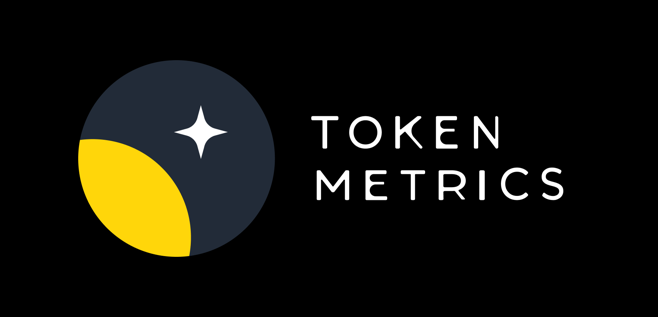Published 21 Aug 2025
How to Use AI to Spot Market Trends Before Everyone Else

Why AI Gives You an Edge in Crypto Trendspotting
The cryptocurrency market moves fast. Prices can surge or crash in hours. At the same time, it generates vast amounts of data — from social media chatter and news headlines to on-chain activity and developer metrics. Traditional analysis simply can't keep up.
This is where AI steps in. It processes wide-ranging datasets at speed, finds subtle patterns, and adapts to new market conditions. In crypto, that translates into spotting trends before they become mainstream.
One peer-reviewed study from Frontiers in Artificial Intelligence tracked Bitcoin price movements from January 2018 to January 2024 using an advanced ensemble of neural networks. The AI-driven strategy achieved a total return of 1,640.32 % — far outperforming a standard machine learning model (304.77 %) and a simple buy‑and‑hold strategy (223.40 %). Even after trading costs — even assuming a 0.5 % fee per transaction — the AI approach still delivered a net return of about 1,589 %, showing how dynamic, data-rich strategies can outperform static investments.
Why is AI so effective here?
-
Real-time adaptation. AI models dynamically adjust their strategies based on what’s happening now — whether that’s a regulatory announcement, whale wallet move, or sudden social buzz.
-
Multi-source data fusion. These models combine on-chain metrics, sentiment data, technical indicators, and more — capturing a holistic market view classical models miss.
-
Speed and scale. AI sifts through data streams 24/7, parsing signals that humans might only notice after they’ve already mattered.
In essence, AI gives you a chance to beat the crowd. It spots small tremors in the market that hint at bigger moves to come.
How Researchers Use AI to Predict Crypto Trends
AI in crypto isn’t just hype. Over the past few years, researchers have tested dozens of models — from classic neural networks to newer transformer-based systems — to see how well they can forecast prices, volatility, and market shifts.
Smarter Price Forecasts
Studies show that advanced AI models dramatically outperform simple strategies like buy-and-hold. One ensemble of neural networks generated over 1,600% return on Bitcoin between 2018 and 2024, while traditional approaches achieved only a fraction of that. The lesson: combining multiple AI models gives much more reliable signals in volatile markets.
Mixing Technical and Social Data
Pure price data tells only part of the story. Researchers now blend technical indicators with “soft” signals such as Twitter sentiment, Reddit posts, or news headlines. When AI factors in how people feel about the market — not just how charts look — it becomes more accurate. Some models that merge sentiment with price patterns reached close to 90% accuracy in short-term Bitcoin forecasts.
Catching Volatility Early
Crypto is famous for sudden spikes and crashes. AI models designed for volatility can flag risk before it hits. Instead of waiting for the market to panic, traders using these tools get an early warning system that helps manage exposure.
Adaptive Trading with Reinforcement Learning
Beyond prediction, some studies focus on AI that learns to trade by itself. These reinforcement learning systems don’t just forecast — they decide when to buy or sell, adjusting to changing conditions in real time. It’s like giving an algorithm a playbook and letting it refine strategies through experience.
Academic research confirms what many traders already sense: AI can process more data, adapt faster, and deliver better results than traditional methods. While no model is perfect, the progress so far shows that AI has the potential to become a core part of crypto trend analysis.
Tools and Platforms That Bring AI Into Crypto Analysis
While academic models prove AI can forecast crypto prices, traders and investors need accessible platforms that turn those ideas into practical tools. Over the last few years, several AI-driven services have emerged, blending on-chain analytics, technical signals, and natural language processing into dashboards and alerts.

Token Metrics
Token Metrics is one of the most established AI platforms in crypto. It analyzes thousands of tokens and NFTs, combining:
-
Fundamental reports — project strength, tokenomics, and development activity.
-
Technical analysis — AI-generated support/resistance and chart patterns.
-
Sentiment and social media scans — to capture early shifts in crowd psychology.
Its strength lies in scoring and ranking assets daily, helping investors filter through noise and spot coins with momentum before they trend widely.

Incite AI
Incite AI focuses on real-time breakouts. Using natural language processing and probability modeling, it tracks early signals in market chatter, altcoin surges, and global flows. The platform emphasizes accessibility: clean UI, multi-asset coverage, and predictive insights across both major and emerging tokens. This makes it popular among traders looking for shorter-term opportunities.

ChatGPT-Powered Dashboards
While ChatGPT itself cannot fetch live market data, developers integrate it with APIs and trading platforms. This combination allows:
-
Interpreting indicators like RSI, MACD, or order book depth.
-
Explaining on-chain metrics in plain language.
-
Generating possible strategies based on historical backtests.
Such setups give traders an “AI analyst” that explains the market and tests scenarios, without requiring deep technical skills.

Messari + AI Add-Ons
Messari, long known for crypto research, now integrates AI to summarize news, produce instant token overviews, and deliver trend analyses. Its data coverage across exchanges, protocols, and on-chain flows is extensive, and AI layers make that information easier to digest in real time.
On-Chain Analytics with AI Enhancements
Platforms like CryptoQuant, Santiment, and Arkham Intelligence increasingly embed machine learning to detect unusual wallet flows, whale activity, or liquidity shifts. For example:
-
CryptoQuant — signals around exchange inflows/outflows.
-
Santiment — combines on-chain data with social sentiment.
-
Arkham — maps wallet identities with AI pattern recognition.
These tools help traders detect hidden accumulation or distribution phases long before prices react.
Mobile & Retail-Friendly Apps
Some lightweight apps now use recurrent neural networks (RNNs) for straightforward price forecasting. Examples include apps that cover 2,000+ coins with prediction windows up to 150 days. While not as sophisticated as professional dashboards, they bring AI trading insights to casual users.
Infrastructure Tools for AI Agents
Beyond analytics dashboards, infrastructure projects like The Graph are critical. They allow AI agents to query blockchain data directly, across multiple chains, in real time. This makes it possible to build custom AI bots that trade, monitor, or analyze markets without manual scraping.
The academic promise of AI in crypto is already materializing in real products. From enterprise-grade research platforms to lightweight mobile apps, AI is shaping how traders access, filter, and act on information. The choice now isn’t whether to use AI — but which AI platform best aligns with your strategy and time horizon.
Case Studies — How AI Works in Real Crypto Markets
The value of AI in crypto becomes clearer when looking at how it’s actually applied. From price forecasting to detecting unusual flows, real-world use cases show how models transition from theory to practice.
Bitcoin Price Forecasting in Action
One of the strongest examples is the ensemble model published in Frontiers in Artificial Intelligence. Trained on Bitcoin’s daily data from 2018 to 2024, it outperformed both machine learning baselines and buy-and-hold. The 1,640% cumulative return demonstrates that blending multiple neural networks doesn’t just improve accuracy — it directly enhances profitability.
These findings are echoed by hybrid approaches (like LSTM + XGBoost), which have shown reduced error rates and better handling of volatility. For traders, this translates into fewer false signals and steadier long-term curves.
Sentiment + Price Data = Sharper Signals
Crypto is especially sentiment-driven. Tweets, Reddit threads, and even memes can move prices. Models that integrate news and social sentiment with price data deliver consistently higher accuracy.
For example, a context-aware model trained to label tweets based on subsequent market reactions achieved nearly 90% accuracy in predicting Bitcoin’s short-term direction. The implication: AI can pick up shifts in mood that human analysts might dismiss as noise.
Volatility and Risk Forecasting
Academic work also shows that AI can anticipate turbulence. Transformer-based models using on-chain data and whale-alert feeds have proven better than classical volatility models like GARCH at spotting sudden spikes.
In practical terms, these systems function like early-warning radars. Instead of reacting after Bitcoin drops 8% in an hour, AI alerts allow risk managers and traders to scale back positions ahead of time.
Reinforcement Learning in Live Trading
Some case studies focus less on prediction and more on decision-making. Reinforcement learning models — trained with signals like Sharpe ratio or reward maximization — learn by trial and error in simulated markets.
When deployed in live conditions, these AIs actively choose when to buy, sell, or hold. Their strategies evolve as conditions change, providing a dynamic edge that static rules can’t match.
AI for Security and Compliance
AI isn’t only about profit. Companies like Elliptic and Chainalysis deploy machine learning to detect money laundering and fraud across blockchains. These systems can trace illicit flows hidden in transaction graphs that are impossible to decode manually.
This has real impact: exchanges, funds, and even governments use these AI-powered analytics to spot suspicious activity before it escalates.
AI + Emerging Crypto Projects
Finally, a growing number of crypto projects now brand themselves as “AI-native.” One example is Ozak AI, which attracted attention in 2025 for integrating predictive analytics into token utility. Its rapid presale growth and projections for Ethereum ($8,000 scenarios) highlight how AI narratives themselves can become market catalysts.
From boosting returns to enhancing risk management and compliance, AI is no longer just an experimental tool. It’s shaping real strategies, influencing market narratives, and even embedding itself into new crypto projects.
Benefits and Risks of Using AI in Crypto Analysis
AI offers clear advantages in analyzing crypto markets, but it also comes with limitations and risks that traders should understand. Using it effectively means balancing both sides.
Benefits
- Speed and Scale
AI can process millions of data points per second — on-chain metrics, news articles, tweets, order books — and filter what matters. While a human analyst might take hours to scan these signals, an AI system produces insights instantly.
- Early Trend Detection
AI models are excellent at spotting subtle shifts before they become obvious. For example, a sudden rise in positive sentiment around a token or abnormal whale activity can be flagged in real time. That gives traders a head start over the broader market.
- Multi-Source Fusion
Unlike traditional strategies that focus only on price charts, AI blends technical indicators, sentiment analysis, and blockchain flows. This holistic approach creates signals that are often more reliable than any single source.
- Risk Management
Advanced AI systems don’t just predict prices — they forecast volatility and downside risks. This allows traders to reduce exposure before large swings, use stop-loss more effectively, or rebalance portfolios proactively.
- Always-On Monitoring
Crypto trades 24/7. AI doesn’t need rest, making it a natural fit for round-the-clock surveillance. It ensures that critical signals aren’t missed during off hours.
Risks
- Data Quality and Bias
AI is only as good as the data it consumes. If inputs are noisy (spam tweets, manipulated news, fake volume), the system can generate false or misleading signals.
- Overfitting
Many AI models perform well on historical data but fail in live markets. Crypto markets shift quickly, and an AI tuned too closely to past patterns may break when new conditions appear.
- Black Swan Events
Regulatory announcements, exchange collapses, or geopolitical shocks can override even the best-trained AI. Sudden, high-impact events are hard to predict with data-driven models.
- Lack of Transparency
Complex neural networks are often “black boxes.” Traders may not fully understand why a model recommends buying or selling, which raises trust and accountability issues.
- Ethical and Systemic Risks
On a larger scale, widespread use of AI in trading could amplify volatility. If too many traders follow similar signals, markets might move faster and more violently. Additionally, AI’s role in projects like fast fashion or high-frequency trading raises ethical concerns about sustainability and fairness.
AI brings speed, insight, and adaptability that human traders cannot match. But relying blindly on models is dangerous. The most effective strategies combine AI signals with human judgment, clear risk controls, and an awareness of the system’s limitations.
Practical Guide — How to Bring AI Into Your Own Crypto Analysis
Using AI in crypto analysis doesn’t require being a data scientist. With the right approach and tools, you can start small and scale as your skills grow. Here’s a roadmap.
Define Your Goal
Start by asking what you want from AI.
-
Short-term trading signals? Focus on platforms that specialize in breakout alerts and volatility forecasts.
-
Long-term investment insights? Look at tools that combine fundamentals, developer activity, and market sentiment.
Clear goals help you avoid drowning in unnecessary data.
Collect Diverse Data Sources
Crypto moves on multiple fronts. A solid AI strategy includes:
-
On-chain data — wallet flows, exchange inflows/outflows, whale tracking.
-
Price & technical data — RSI, MACD, moving averages, order book depth.
-
Sentiment data — tweets, Reddit discussions, Google search trends.
-
Fundamentals — GitHub commits, tokenomics, ecosystem growth.
The stronger the mix, the better your AI can detect real patterns.
Choose the Right Tools
You don’t need to build models from scratch. Options include:
-
All-in-one platforms like Token Metrics or Incite AI, which deliver pre-built forecasts.
-
Research dashboards like Messari for AI-enhanced summaries and trend detection.
-
Custom setups with ChatGPT integrated into APIs, giving you an “AI analyst” that explains metrics in plain English.
Pick based on your skill level and time horizon.
Test Before Trusting
Never take an AI’s output at face value. Backtest predictions on historical data. Compare accuracy against simple benchmarks like buy-and-hold or moving averages. If a tool consistently adds value, integrate it into your process. If not, refine or move on.
Combine AI With Human Judgment
AI spots correlations, but it doesn’t grasp context the way humans do. For example, it may not fully account for an SEC announcement or a global crisis. Use AI as a signal generator, but always weigh it against your own market knowledge.
Manage Risk Proactively
Even the best AI won’t eliminate losses. Use its outputs to:
-
Set dynamic stop-loss levels.
-
Adjust portfolio weights during volatile periods.
-
Diversify instead of betting everything on one AI-driven call.
AI is a tool, not a guarantee.
Integrating AI into crypto analysis is about balance. Start with clear goals, use the right mix of data, validate outputs, and keep human judgment at the center. Done right, AI becomes a powerful partner — spotting signals you’d miss and giving you the confidence to act before the crowd.
Conclusion
AI is no longer an experimental side tool in crypto — it’s becoming central to how markets are analyzed and traded. It processes data faster, sees trends earlier, and adapts to changing conditions better than any human can. But its real power comes when combined with human judgment and sound risk management.
As AI and crypto converge, the traders who learn to use these tools wisely won’t just follow the market — they’ll be ahead of it.
That’s exactly the mission of RatexAI: to turn billions of on-chain and off-chain signals into structured, real-time intelligence. By combining advanced AI agents with institutional-grade analytics, RatexAI makes complex crypto data actionable. Instead of drowning in charts and noise, traders and funds get clear signals that highlight opportunities, risks, and emerging narratives — before the rest of the market catches on.
Read More




 Get RateX Pro
Get RateX Pro

 06 Jun 2024
06 Jun 2024
